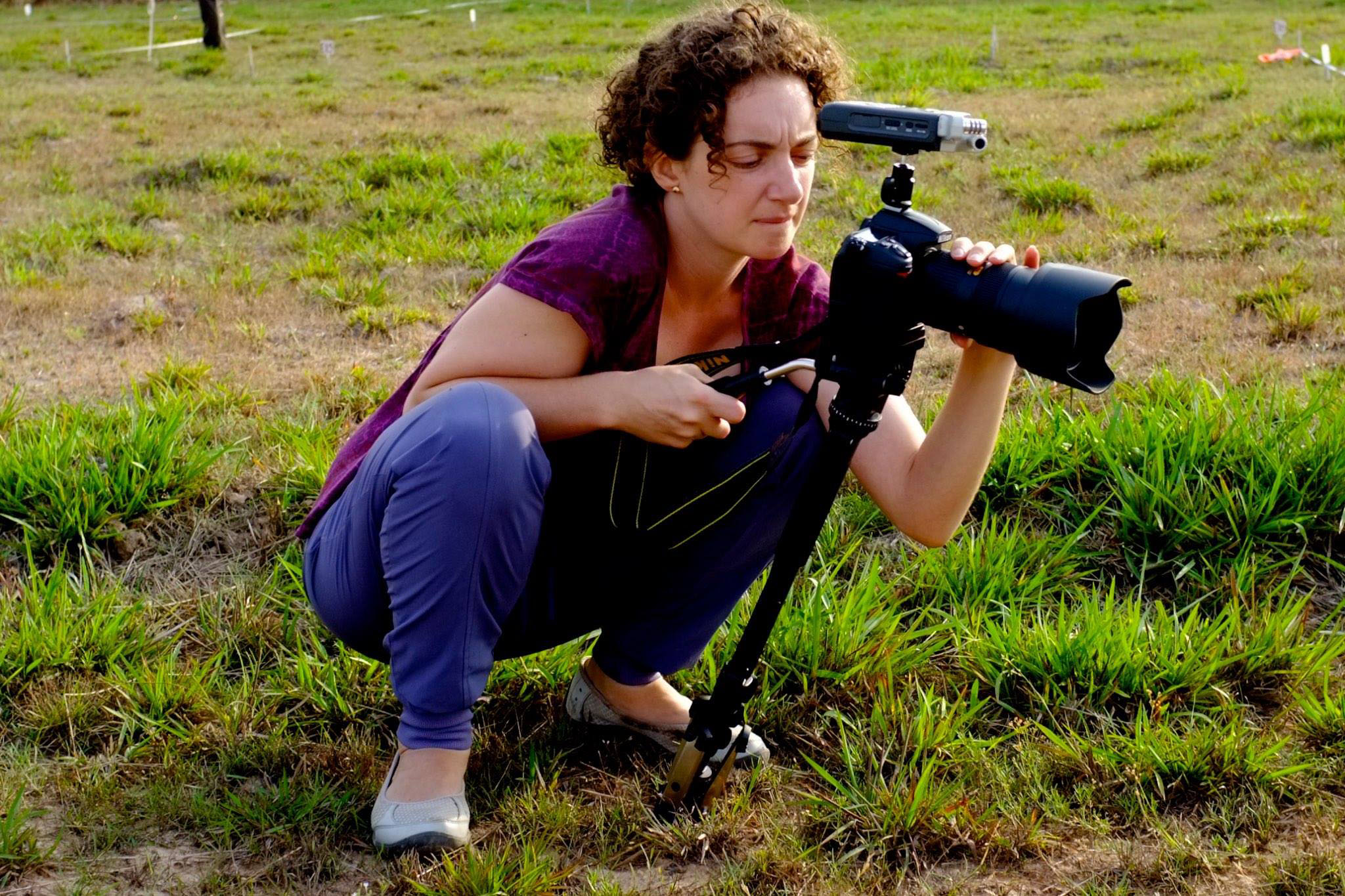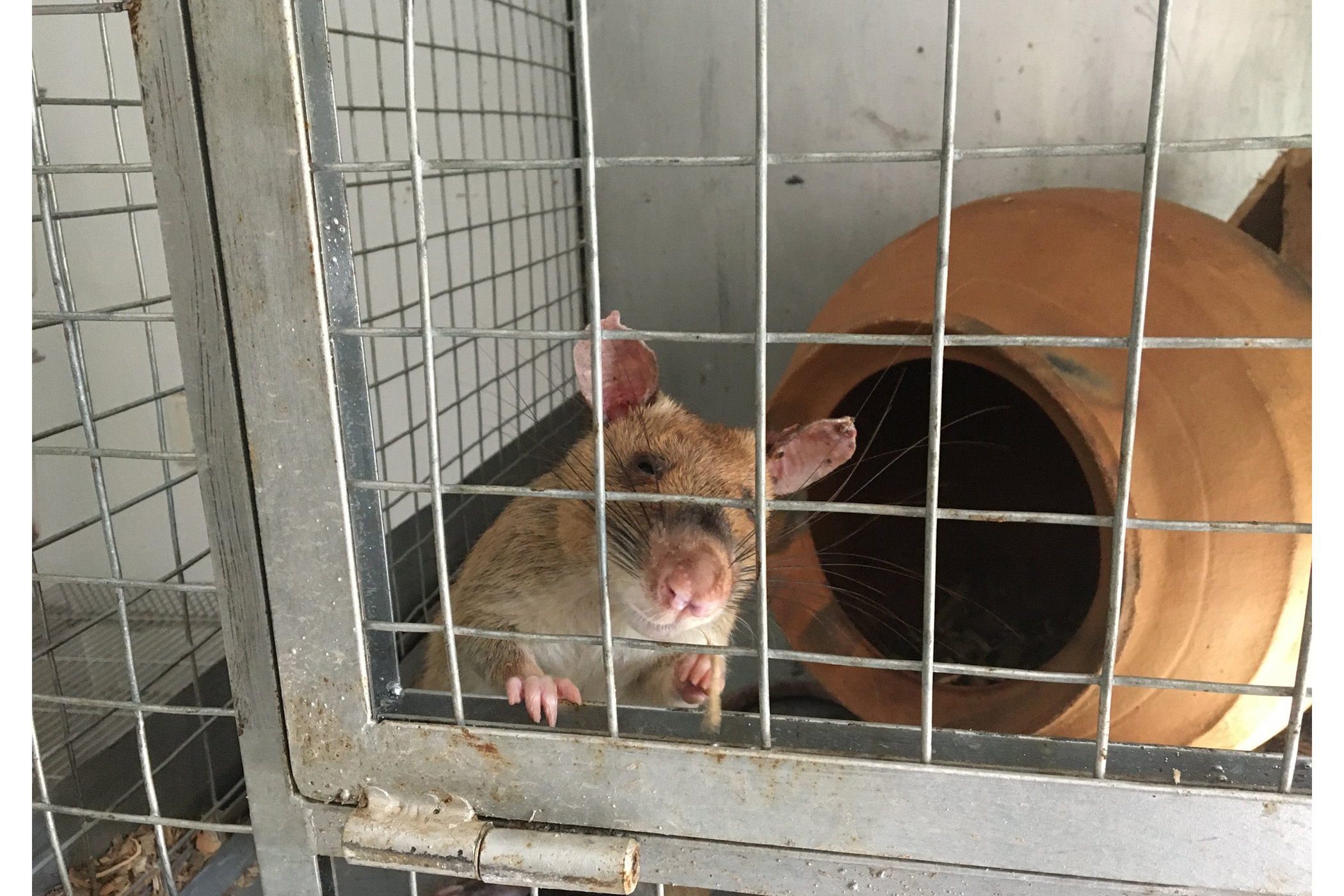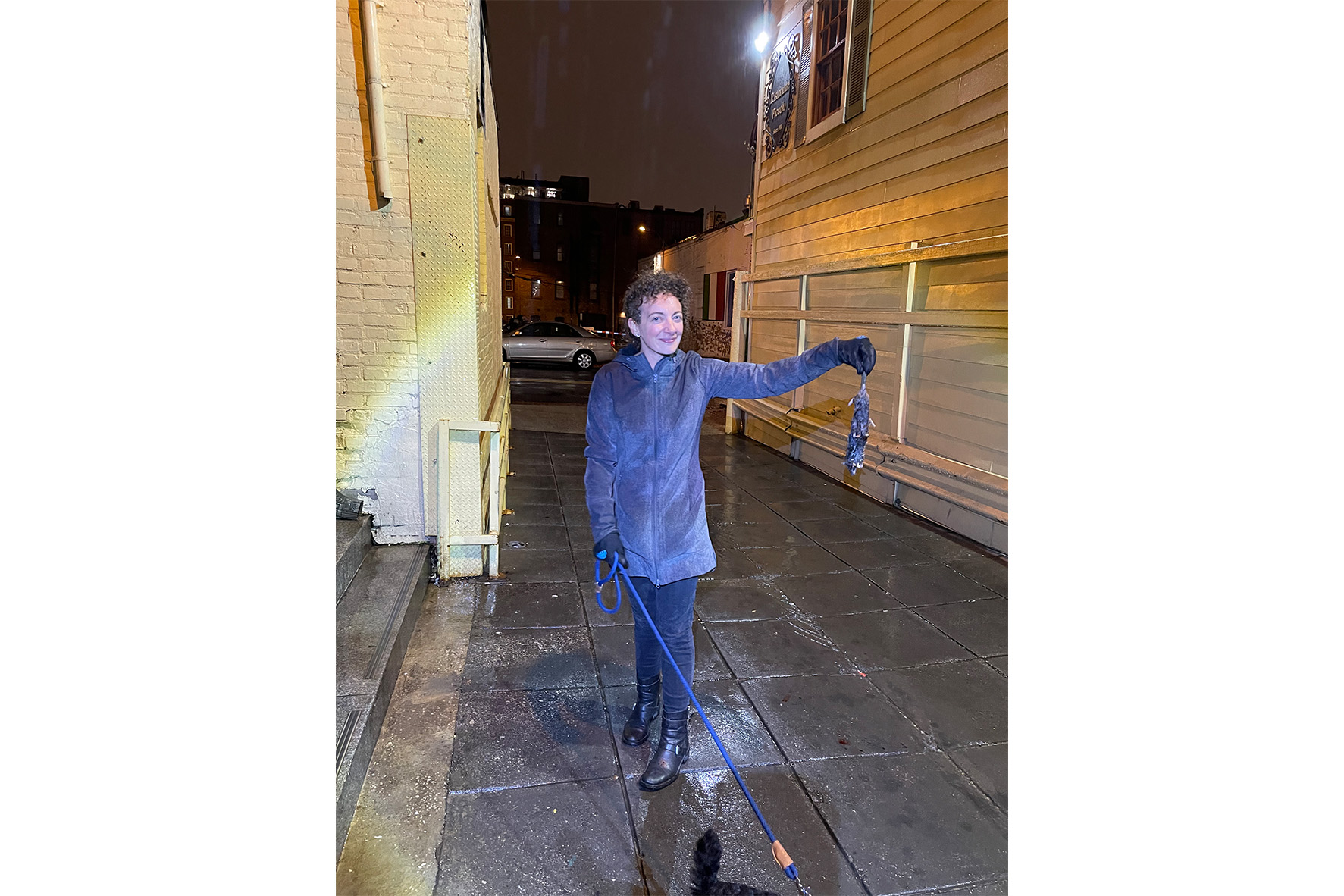Faculty Feature: Darcie DeAngelo
Dr. Darcie DeAngelo is the current Annie Clark Tanner Teaching and Research Fellow in Environmental Humanities and Environmental Justice, a position supported by the Environmental Humanities Program and the Tanner Humanities Center. During the fellowship, Darcie has spent her time writing her new book “For the Love of Rats” and is currently teaching the Environmental Humanities Writing Seminar.
Darcie DeAngelo is an assistant professor in the Department of Anthropology at the University of Oklahoma. As an environmental and medical anthropologist trained in visual methods, her work engages with human-nonhuman relations such as the love between landmine detection rats and their handlers, the excitement of dogs and humans as they hunt for rats in cities, and the kinship of humans and their sourdough starters. As the Annie Clark Tanner Fellow in Environmental Humanities, she will be writing her book, "For the Love of Rats," which explores the surprising relationships between rats and humans across time and space. She also edits the journal, Visual Anthropology Review. Find more of her work here.
Below are Darcie’s written responses to my questions about her academic background, her new book, and how her work fits within the field of Environmental Humanities.
How did you find yourself exploring the intersections of medicine, the environment, and war through the lens of medical anthropology? What aspect of this interdisciplinary work excites you the most? Additionally, what key insight do you wish more people understood about the interconnectedness of these subjects?
I first became interested in studying how people heal when I worked on racial disparities in mental health in the United States. From that training I entered graduate school in anthropology and I approached Cambodia as my field site, a place where people had suffered recent wars and, as a consequence, lived in military wastelands. My first fieldwork took place on minefields at a remote biomedical workshop that produced and repaired prosthesis limbs for those who had needed amputations after landmines injured them. I saw how the environment both was produced by war and produced an effect on people in ways that could be described as physiological, psychological, and spiritual. The Cambodian minefields were places where the environment, war, and medicine clearly intertwined.
Excitement might be the wrong word for my curiosities about these entanglements. When I conducted fieldwork on minefields, I could not walk anywhere. That kind of immobility inspired me to follow people who could walk on this dangerous ground, those who worked in landmine detection. While spending time with deminers, I started getting interested in the animals people used to help them clear the land of military waste in Cambodia. In 2015, they were training a new animal for this, the landmine detection rat. I was able to follow the implementation process of that training. The book for this project, How to Love a Rat: Detecting Bombs in Postwar Cambodia, is an academic book that will come out at University of California Press in the fall 2024.
Now, on my second book project that I’m writing this year under the Annie Clark Tanner Fellowship, I am exploring rats in other ways and through other stories.
What helps me understand environment, which is a huge word with multiple networked actors, are its micro relations. So, I find it easier to think about global events like climate change and environmental devastation through pest-human relations—how humans interact with rats tells us how humans relate to environment writ large.

As the Annie Clark Tanner Fellow in Environmental Humanities and Environmental Justice at the Tanner Humanities, you're currently working on your forthcoming book, "For the Love of Rats." Could you provide an overview of what readers can expect from this book?
This second book, For the Love of Rats, is under contract with Liveright, a W. W. Norton & Company imprint. It is contracted as a popular nonfiction, so it will not be as academic as the first book and it will also take on different themes. That said, I have done a lot research and multi-sited fieldwork for it. I visited a lab where the world famous scientist, Shimpei Ishiyama, tickles lab rats. I’ve hunted rats in the streets with dogs in DC and NY. I am also drawing from stories about the landmine detection rats in Cambodia. I am happy to say it will not all be about war and postwar relations, but it will be about environmental devastation. Each chapter explores different human relations with rats across space and time. The book as a whole asks why humans tend to be disgusted by rats and partly it answers that by suggesting that humans see in rats what is disgusting about themselves—that is, humans are also pests.

What does it entail to be an anthropologist studying rats? In what ways do rats contribute to or challenge our understanding of humanity?
Anthropology is, of course, the study of humans. There has recently been the scholarly consideration that human movement across the globe is not singularly human, though. On every scale, multiple beings flourish alongside humans. Even down to the individual, a human being is composed of multiple species with symbiotic microbiomes that keep them alive and healthy. Studying rats shows us one of the nonhuman beings that have become part of human life—through population health events like the rise of cities, through pest management, through domestication and laboratory life. Rats also illustrate behaviors and patterns of being human that most humans prefer not to see nor acknowledge—our adaptability, for sure, but also our capacity for destruction. I don’t want to come off as this being a righteous condemnation of rats and humans. Instead, I want to look at rats with clear eyes as a loveable animal with a kinship with humans but also an acknowledgment of what that kinship really means.

How does your research at the intersection of medicine, the environment, and war contribute to the broader discourse within the environmental humanities? In what ways do you see your work engaging with or challenging existing paradigms within this interdisciplinary field?
I think my research follows trends about human-nonhuman relations in these disciplines while engaging with what really makes humans exceptional, war and violence. Of course, there are other kinds of beings who seem to ‘war’ with each other, but humans are fairly unique in our violent tendencies. I see the challenge of such devastating violence as being moral rather than scholarly—how can we acknowledge atrocities, how atrocities have contributed to climate change as well as suffering across species, and how can we simultaneously maintain our affection and delight in being human? I consider the rat as a kind of practice for this—loving rats while acknowledging their destruction—it helps me frame those conundrums. Stories and storytelling with the humanities also helps me with this. Perhaps this is too personal answer for a question about broader discourses, but it feels like these are the broader challenges of our lives (perhaps always already)—confronting human violence and destruction, holding humans accountable for it, while also loving them.
Categories
Featured Posts
Tag Cloud
- community engagement (15)
- student (4)
- nuclear energy (1)
- community practitioner in residence (2)
- practitioner-in-residence (3)
- student spotlight (1)
- Great Salt Lake (1)
- art (1)
- activism (1)
- faculty (4)
- education (1)
- alumni (3)
- environmental literature (1)
- EH research professor (1)
- utah award in the environmental humanities (1)
- indigenous sovereignty (1)
- activist (1)
- downwinder (1)
- staff (1)
- students (2)
- thesis (2)
- project (2)
- exam (1)
- Native research methods (1)
- 1U4U (1)
- graduation (1)
- research (1)
- event (1)
- youth activism (1)
